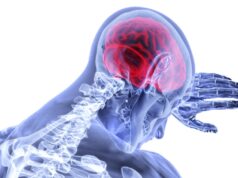
As per an observational study published in the journal Neurology last year, female hormone therapy use may be associated with a higher risk of intracranial haemorrhage from cerebral cavernous malformations (CCMs)—raising questions about the safety of these therapies for CCM patients in clinical practice. Here, study authors Alejandro Santos and Philipp Dammann (both Essen, Germany) attempt to elucidate the wider implications of their findings.
CCMs can lead to seizures and neurological deficits due to intracranial haemorrhage, or non-haemorrhagic focal neurological injury. The pathophysiology leading to stroke due to intracranial haemorrhage in patients with a CCM is still unclear, but some theories exist based on previous research. It is believed that the latter might be triggered by clot formation in the dilated vessels of the CCM through which the blood flows very slowly.
Female hormone therapy—oral contraception in females of reproductive age and menopausal hormone therapy in postmenopausal females—has been shown to increase the risk of stroke and venous thrombosis. Yet, the latter is not withheld from patients with CCMs. The effects of these drugs on the risk of intracranial haemorrhage are also unknown.
Therefore, the rational of having increased blots clots in the caverns of CCMs in patients under female hormone therapy—which might subsequently lead to higher rates of bleeding—is reasonable. Unfortunately, the lack of studies assessing this possible effect leave guidelines unable to make recommendations for patients under female hormone therapy suffering from a CCM.
To this end, the University Hospital of Essen in Germany recently performed an observational cohort study with long-term follow-up in collaboration with the Mayo Clinic (Rochester, USA) to investigate such associations.
Both clinics included consecutive patients with a CCM being followed in their respective departments, and compared the association between use of female hormone therapy and the occurrence of intracranial haemorrhage due to the CCM across up to five years of prospective follow-up. Out of a cohort of 722 female patients, aged 10 years or older at time of CCM diagnosis, 137 used female hormone therapy at any point during follow-up.
This study showed that female hormone therapy use was associated with an increased risk of subsequent intracranial haemorrhage and, moreover, that the use of oral contraceptives in female patients aged 10–44 years was associated with an even higher risk of subsequent intracranial haemorrhage.
Being the first piece of collaborative group research showing these unprecedented results, our findings raise questions about the safety of female hormone therapy in clinical practice in patients with CCM. This constitutes the clinical importance and relevance of our study in terms of addressing the following:
- Establishing an association between female hormone therapy intake and intracranial haemorrhage in females with CCM
- Segregating different types of available female hormone therapy and assessing their individual risk leading to intracranial haemorrhage in terms of dose, method of administration, mode of mechanism etc.
Coming from a study with Class III evidence, these data alone are unfortunately still insufficient to warrant change in the known guidelines, as well as clinical practice for this disease. Such findings are, however, a starting point to drive further research on the matter.
In pursuance of answering these critical points for such a rare disease, future research should motivate an international collaboration between centres specialised in this area to investigate the association between female hormone therapy and intracranial haemorrhage in females suffering from a CCM.
Through such wide collaboration—gathering data from thousands of patients—the aim will be to better understand this unknown disease, as well as assess haemorrhagic risk in all female CCM patients under female hormone therapy.
Future study results could significantly impact the future of female CCM patients and modify patient counselling. By performing large, international, multicentre studies addressing this matter, we might be able to advise females suffering from CCM under female hormone therapy in terms of which medications (including type of medication and method of administration) have been shown to have a harmful association, and which have not.
Alejandro Santos is a medical doctor in the Clinic for Neurosurgery at Essen University Hospital in Essen, Germany.
Philipp Dammann is a senior physician and consultant in the Clinic for Neurosurgery at the Essen University Hospital. He specialises in neurosurgery and intensive care medicine.
The authors declared no relevant disclosures.











